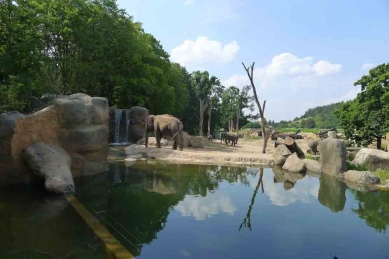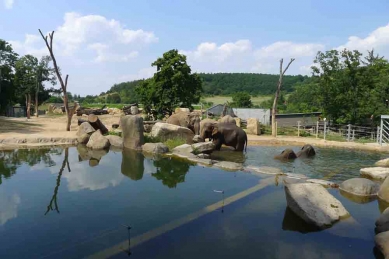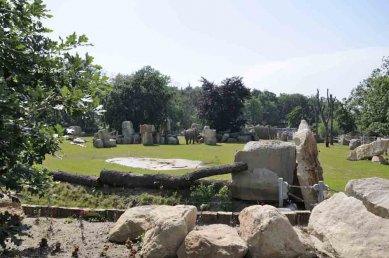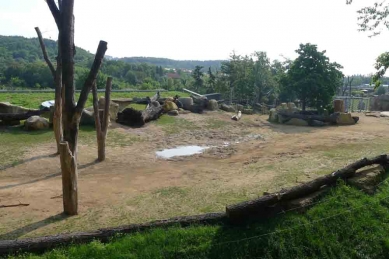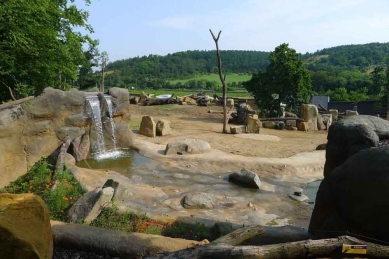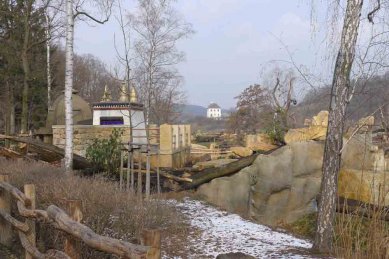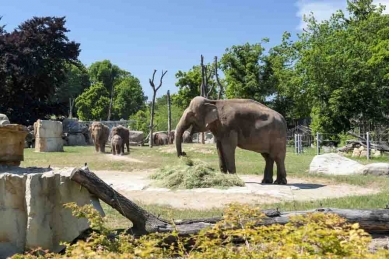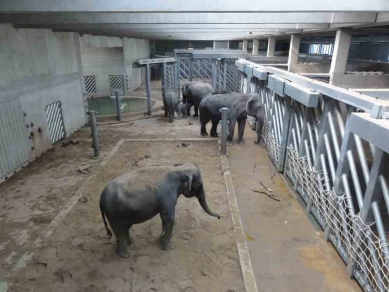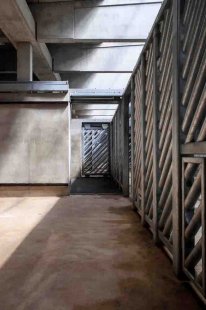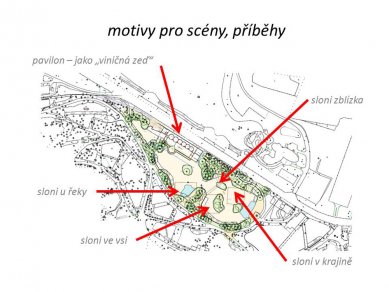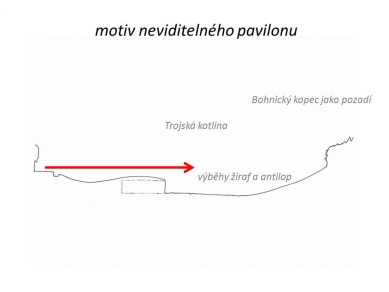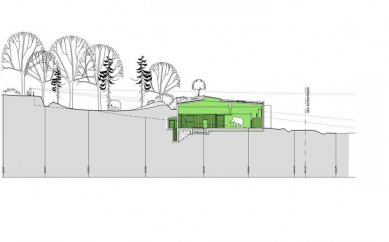
Valley of the Elephants

 |
The enclosures covering an area of 7,500 square meters provide an excellent environment for Indian elephants. They are essentially clearings surrounded by a forested perimeter and thickets within the enclosures. The Indian elephant is a forest animal and thrives at the interface of forest and meadow. Elephants have access to bathing lakes, sandy, clayey, and grassy terrains in the enclosures. Barriers are part of the scene, so they are perceived as natural inequalities, rock formations, or completely permeable rope structures for views. The lookout points for visitors offer composed views into the landscape, towards watercourses, or at herds in motion. There is always a detail in the foreground, whether it is colorful bushes or trees with hanging feed, in the center – on stage – the main characters are the elephants, and in the background, there is a forest or Bohnicky Hill.
The pavilion is indeed large. The main architectural task was to conceal it from the eyes of zoo visitors. A landscape principle of arranging raised horizons, behind which the landscape continues, was used. The pavilion completely disappears in the terrain wave that forms the middle horizon. Beyond it, the landscapes of Troja and Bohnice can be seen.
The capacity of the pavilion is ten elephants. For visitors, the pavilion is deliberately designed as a view into the back area. This is entirely new. Typically, pavilions mimic landscapes. Here, however, the creators came up with the attractive idea of peeking into the background, where visitors normally do not go. The reality of the utility pavilion is surprisingly minimalist. It actually resembles contemporary interiors of buildings made of exposed concrete, which are intended for people.
The English translation is powered by AI tool. Switch to Czech to view the original text source.
0 comments
add comment


